Because August in Europe is crazy busy, and because I travelled with my girlfriend and friends most of the month, I had pre-planned almost everything. But when I hit Montenegro, I had nothing prepared whatsoever. Because of a cancelled tour and a lot of rain, I only stayed 3 days and I learned very little about the country. But I did go on a very cool, 12 hour long day trip. So here’s what I saw.
Photographed here at the worst time of the day, Sveti Stephan, a very old fishing village that was eventually abandoned and, in time, turned into a 50 room luxury hotel. The good thing for the rich and famous is that non-guests are not allowed on the tiny island, so if you book the whole thing you should be paparazzi free. Curious, I checked their website and found a hilarious note about the rates. Various rooms and suites cost between 950 and 3850 euros a night, but there is a note: “Rates do not include tourism tax of 1.3 euro a night”. Good, nobody wants the sticker shock of a 3,851.30 euro suite when you had budgeted for 3,850.00.
Sveti Stefan is located very close to Budva, the most important touristic destination in Montenegro. The town of 14,000 gets well over half a million visitors a year. I was told it is an excellent clubbing destination, but since I hate nightclubs, for me Budva is one of the worst places to vacation on the planet. A little town with a few beaches, and catastrophic daily traffic jams. When I exited the town, the line of cars waiting to get in was at least 1.5 km long. I read the wait to get into a parking was often over one hour. Demand on local infrastructure is so bad the town sometimes runs out of tap water! I would rather vacation in Afghanistan.
Kotor is not as bad, but the old town has long ceased to be a town and is now an Disney-like attraction. I walked all around and saw only 2 businesses that were not directed specifically at tourists (one lawyer’s office and a hairdresser). You can’t see the old town on this photo because it is entirely hidden by the ship! I actually went to a shopping mall in the “suburbs” for lunch because it felt more normal to me.
Inside, you see groups like these everywhere, from the ship or tour buses.
OK, so I didn’t like the coastal resorts, but enough about the negative stuff. Here’s the photos from the big, nearly 300 km day tour, mostly conducted in pouring rain and thunderstorms.
Boka Bay from a winding mountain road, with Kotor itself hidden behind the tree.
Illustrating how crazy the weather was, this picture was taken a little higher, perhaps ten minutes later, and the bay was completely gone!
Mandatory selfie.
In Lovcen National Park, you can climb hundreds of steps (many in a tunnel), to the summit of Lake Peak.
There, you find the mausoleum of the great Montenegrin Petar II Petrović-Njegoš, prince, bishop, poet, philosopher and modernizer of Montenegro. His body is not actually there, but that is a long and boring story.
What is a nice story, although perhaps not true, is that he requested to be buried there instead of on the slightly higher next mountain, where the antennae are located. Apparently, the man thought by many to be the greatest Montenegrin ever, wanted to leave the highest one for the future, in case another man made greater contributions to the nation.
And then the sky closed in an instant and I ran back to the van! Incidentally, several towns in Montenegro and Croatia were flooded that day due to the torrential rains. In Dubrovnik it was so bad that the authorities advised residents that tap water was no longer potable.
We headed to the village of Njeguši, famous for its prosciutto. The hams seen in this smoker spends 4 months here before becoming a late breakfast for hungry tourists.
The breakfast included three different kinds of… alcohol! First, a shot of very strong local plum brandy (šljivovica), and then a big glass of some kind of honey brew. I say alcohol, but the honey drink is almost alcohol-free, with a content of about 1%. However, the local custom is apparently to drink 2/3 of your glass and then mix the rest with red wine, producing something vaguely reminiscent of sangria.
You can also buy the products of the restaurant, opened in 1881. Behind the display, dozens of pre-made homemade cheese and prosciutto sandwiches, awaiting a huge group of Russian tourists due to arrive shortly.
The Ostrog Monastery, an important pilgrimage site of the Serbian Orthodox Church, but visited by people of many faiths. Because of the layout of the place, to get a good picture of the facade you would have to be far and use a telephoto lens. Probably not practical in this kind of weather.
Although Serbian, the place sees a lot of Russian pilgrims and they and others seem to leave behind some sort of religious articles, and money which the priests pick-up.
Even if you don’t read cyrillic characters, you might guess the words “Toronto, Canada” (Торонто, Канада) on the bottom right. The cliffside church is being renovated by money donated by some successful – if not particularly humble – Orthodox immigrant to Canada.
The Crnojević River, which feeds into the largest lake in the Balkans, Lake Skadar. Despite the rain, I’m happy with a few of the pictures I got.
And we stopped for lunch in a local village, Rijeka Crnojevića. The guide had a deal with the owner, so we all ordered the same thing, fish soup, followed by grilled fish with potatoes and salad. Upon seeing the platter, an Australian tourist in her mid-twenties exclaimed: “Eww! They look like fish!” I guess she expected fish sticks.
This monument honours the people who died fighting in a conflict, or conflicts, I don’t quite understand. The commemorative dates are 1919-1945. It is in the village itself and there are only 27 such stones, but as you can see, dozens of people share the same last name. An indication of the incredible losses some of these places suffered in the 20th century. Another Australian – same age group – pointed to the hammer and sickle and asked the guide: “What’s this symbol?”. This probably reflects mostly on her less than stellar knowledge of history, but it also made me feel old, as I can’t imagine someone my age, even in Canada where we don’t put a lot of effort on teaching history, not recognizing the Soviet symbol.
The popular vacation spot was deserted in this weather condition.
And so was the centre of Cetinje, the former capital of the Kingdom of Montenegro. Our guide said that on this square, at this time of the year, it was often difficult to walk around, because of all the crowds!
I think this picture came out very well. On the way back, I was sitting in front and the guide said I might want to take a picture of Budva from high on the hills. I suggested that this busy, narrow winding road was not a safe place to stop. He said: “Of course, but you can take the picture out the window”. I explained why you can’t do night photography in a moving vehicle.
And then I demonstrated! And that was it for my short visit to Montenegro, the second youngest country in the world (after South Sudan), which separated from Serbia by referendum in 2006.
#Montenegro

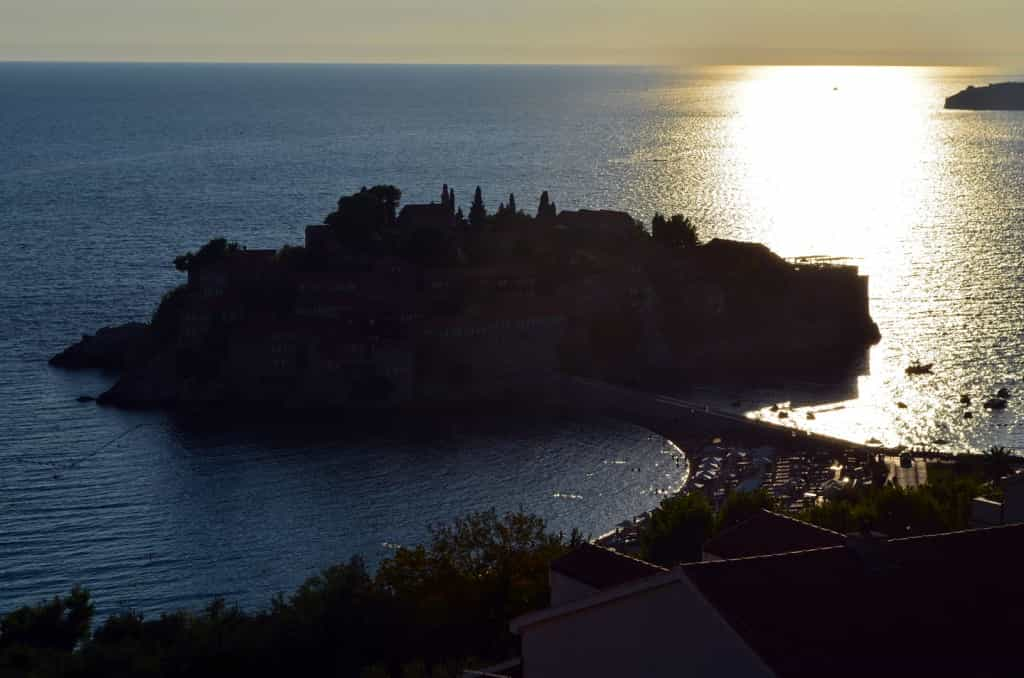




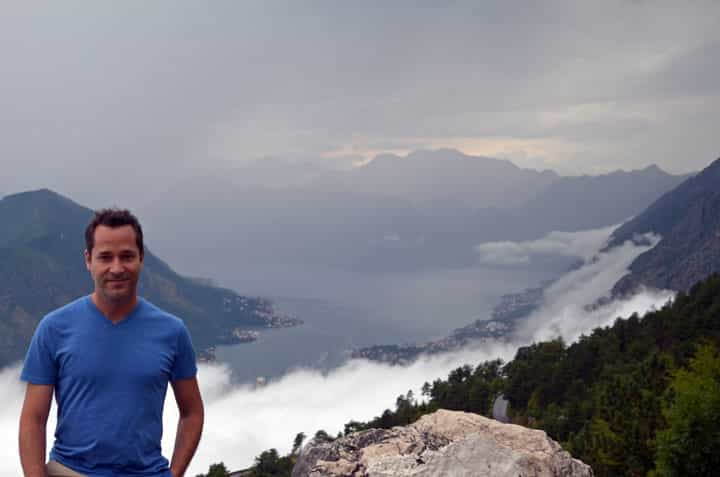
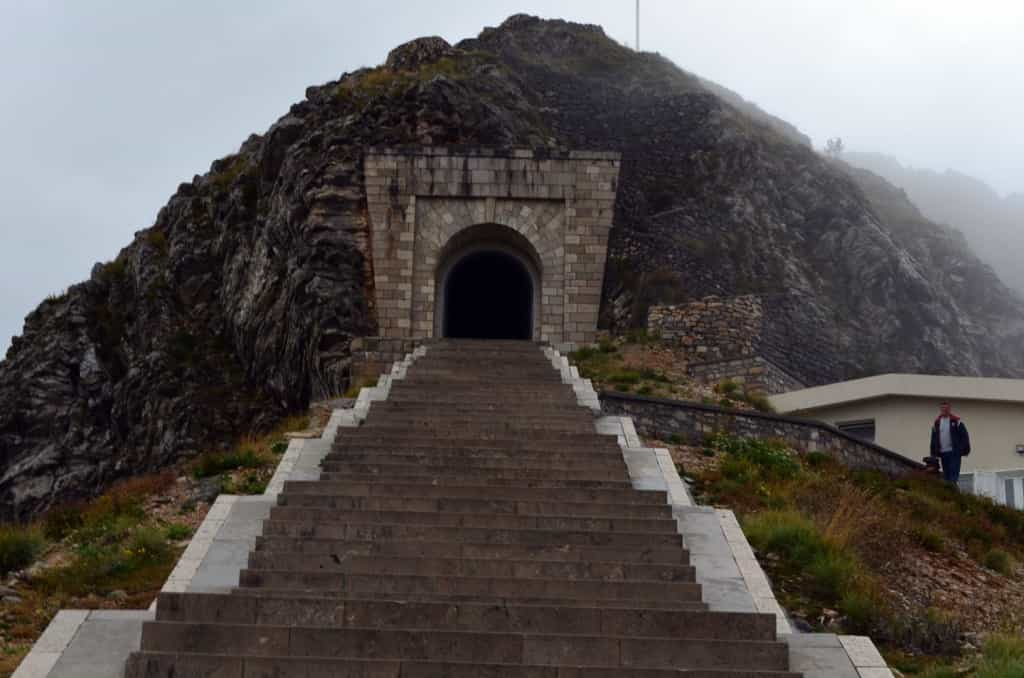


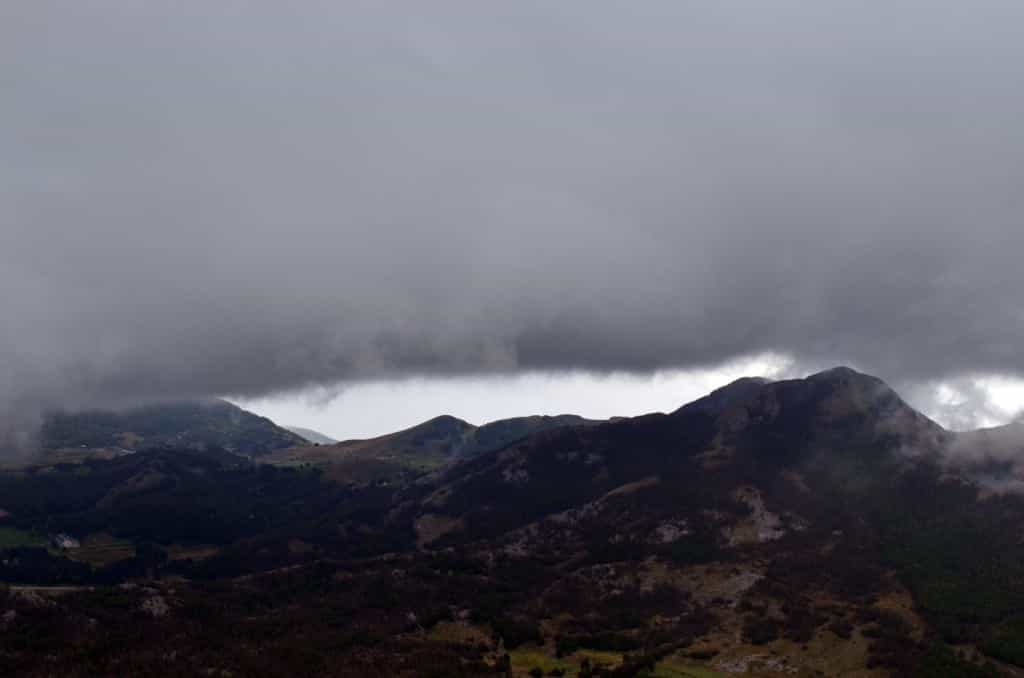



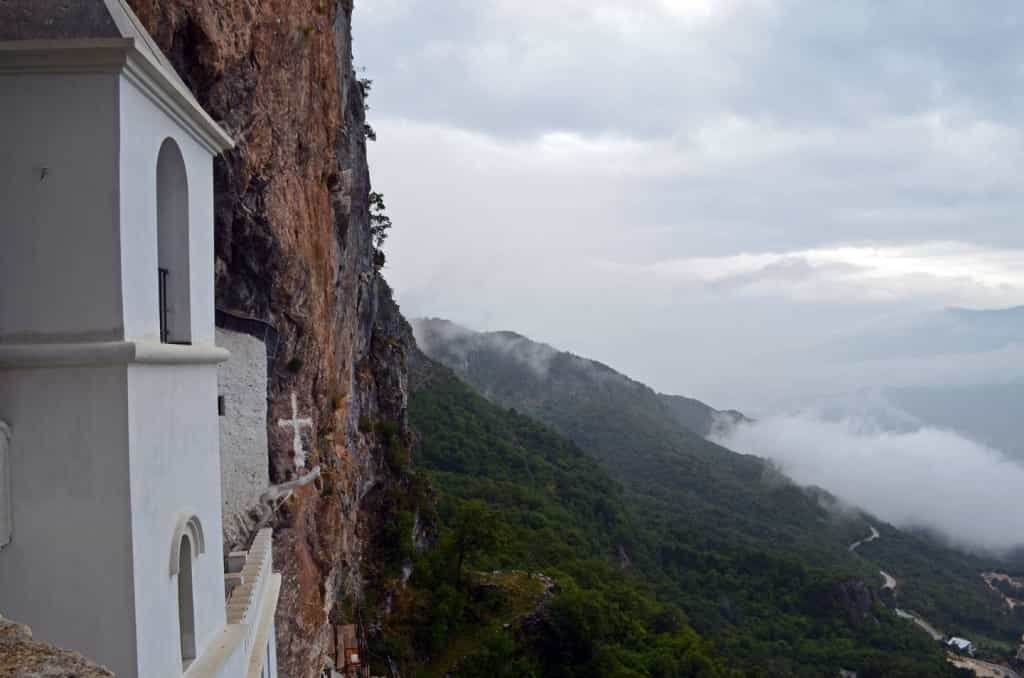


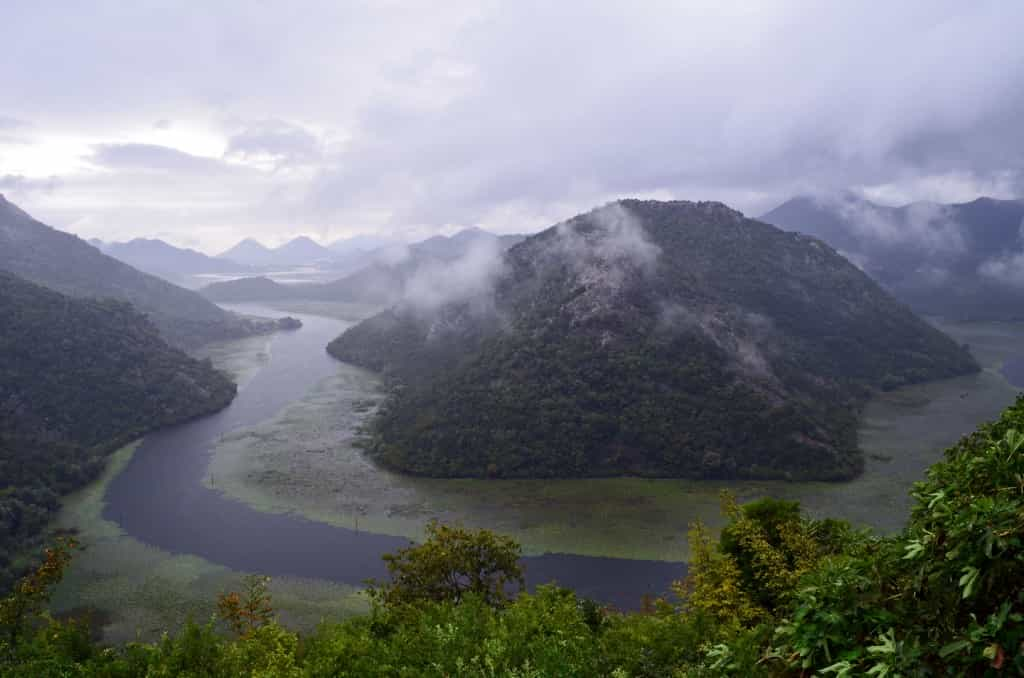
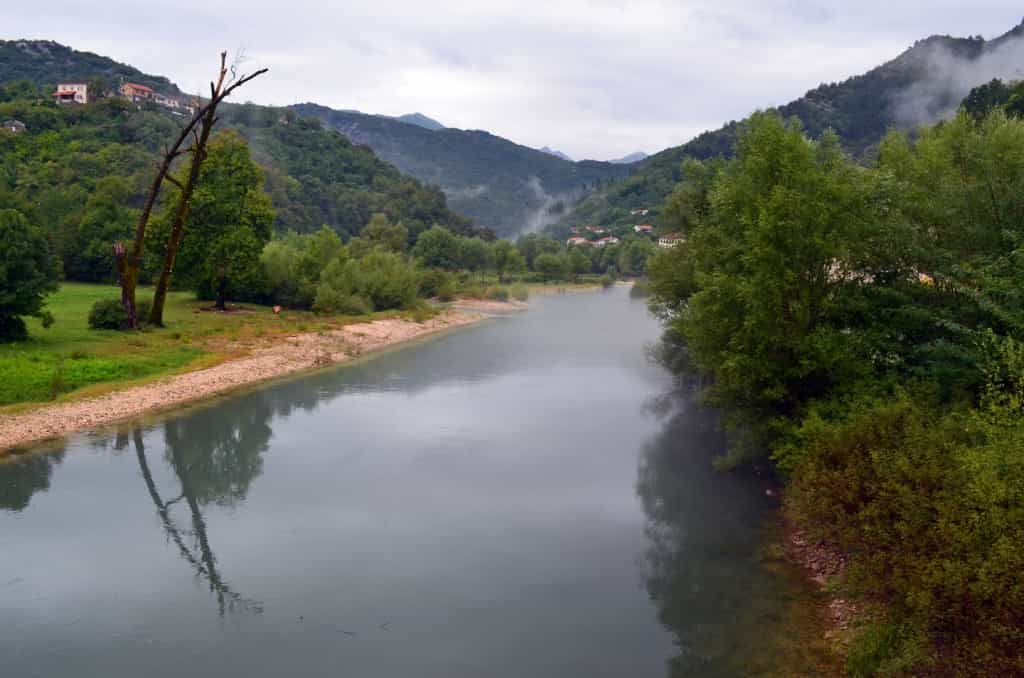
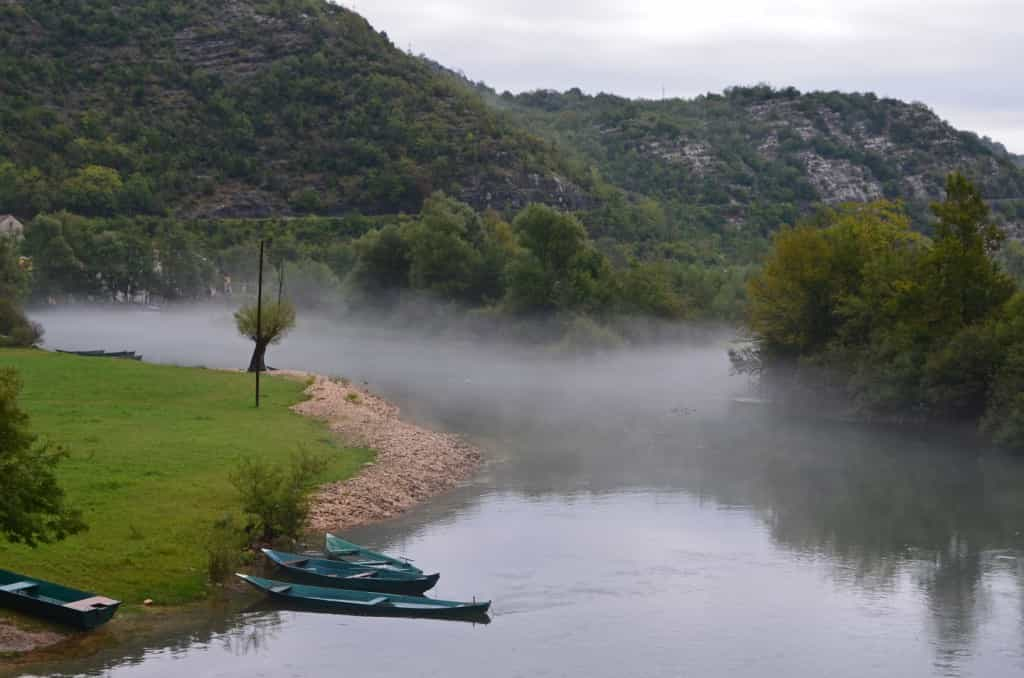
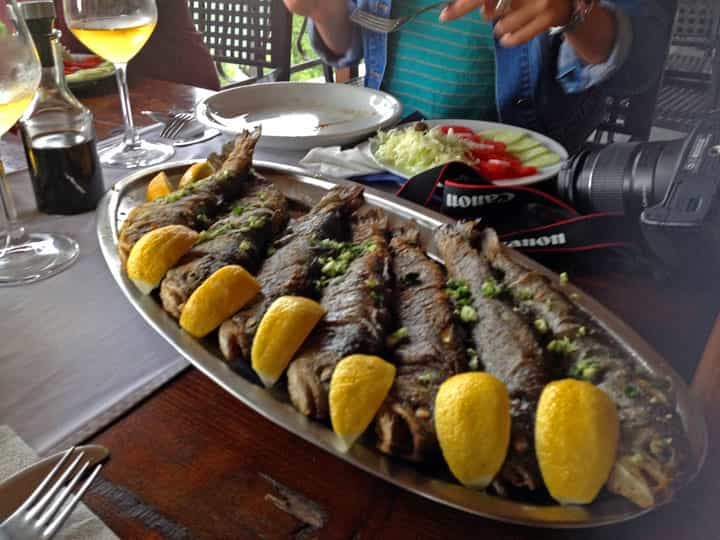





Stupid stralyians…
Hum, I would normally consider this as hateful speech, but coming from you I guess it’s constructive criticism. You would have enjoyed; they reminded me a little bit of the “English ladies” in Africa!